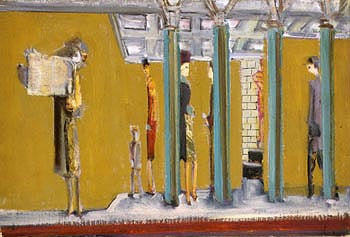How we deal with our encounters with death can either increase the darkness or create more light surrounding our lives. View the study sheet here. Watch the recording here.

Nine years before Buzz Lightyear cried out “To Infinity…and Beyond!” in the movie Toy Story, Israeli mathematician Eli Maor published To Infinity and Beyond: A Cultural History of the Infinite. In it Maor explores the idea of infinity in mathematics and art. He examines the profound intellectual impact the infinite has exercised on the human mind. And in doing so, he relishes in both fascination and puzzlement on the subject.
Often, we count numbers in order to arrive at some finite conclusion. How much I have in the bank. How many people are in a room. During this season in the Jewish calendar, we use counting not to come to a stopping point but to propel ourselves on a limitless journey. To experience that which has no end. To encounter infinity.
Our counting at this time of year begins with the number one, plays with the number four, emphasizes the number seven, and lures us into mystery with the number forty-nine.
In the Bible Pesach is one day, the 14th of Nisan, when the Passover offering was made. That moment morphs into a seven-day celebration, which the Bible identifies not as the festival of Passover but as the Festival of Unleavened Bread. Seven days immersed in joy and gratitude for renewed life evokes the number of days of Creation.
The seder service we enact around our tables refers over and over to the number four: the number of cups of wine, questions, children, and expressions of liberation. According to kabbalah, the universe consists of four worlds, each one a unique source of power and experience. The wonder of it all is that those worlds exist within us as well as outside of us.
With the second evening of Passover we begin counting forty-nine days, seven times seven. In kabbalah there are seven energetic qualities of God accessible to us as humans. Forty-nine days allows us to experience each of them in dynamic relationship with each other. By the calendar, at the end of forty-nine days we arrive at Shavuot, the commemoration of the giving of Torah at Sinai. Spiritually, we ascend a ladder of moral refinement to reach a peak encounter with the Source of all life, a Source known as Ein Sof, that which has no end. Infinity.
To transcend the bonds of the finite was a compelling aspect of the art of Mark Rothko. He began by seeking to express what he saw with his physical eyes. He then shifted to emphasizing the emotions of his subjects. Later still he began to dissolve the recognizable figure and to replace it with biomorphic shapes evocative of subconscious states. His final works are fields of color that seem to float, transcendent yet resonant of what dwells within each of us.
Abraham Joshua Heschel in God in Search of Man wrote: “There are moments in which heaven and earth kiss each other; in which there is a lifting of the veil at the horizon of the known, opening a vision of what is eternal in time.” Rothko never settled. His impulse to push past boundaries in search of truth defined his work. His late works in particular are artifacts of his journey to experience the sublime, to “lift the veil at the horizon of the known” and to “open a vision of what is eternal in time.”
We count the days to make them count. To create a life of fulfillment. We number them to come not to an end but to the endless beginning of it all. To Infinity…and Beyond.
Join us here at 7:00 p.m. (PDT) Thursday, April 21 as we explore to infinity…and beyond.








